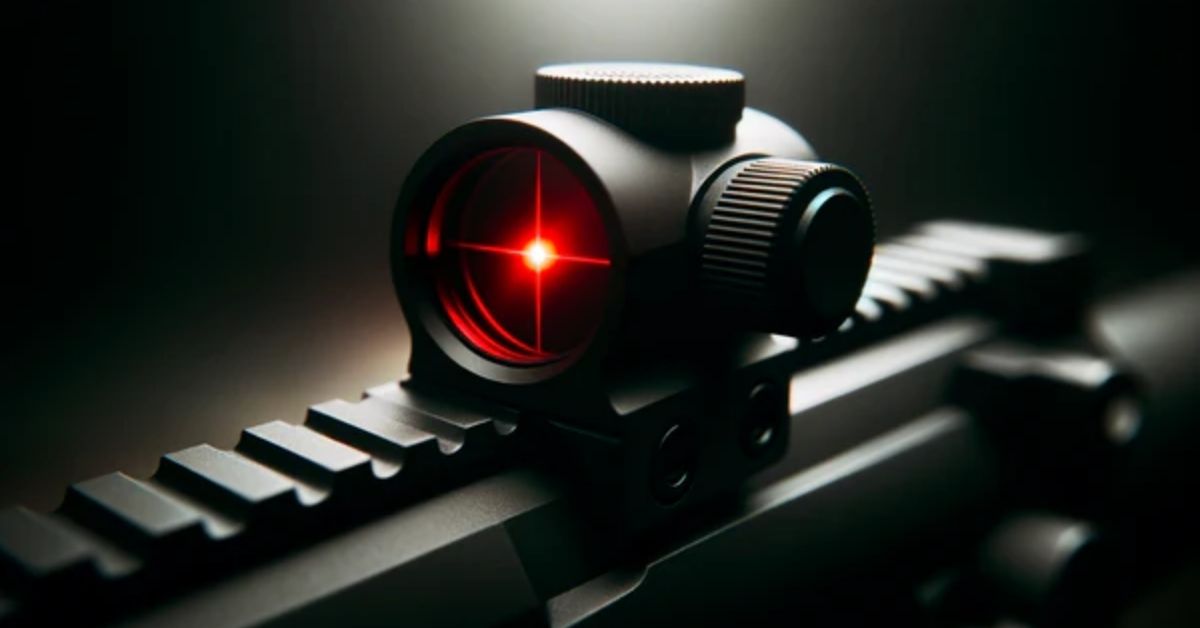The world of firearms and tactical operations has seen a revolutionary transformation with the advent of cutting-edge technology. Whether for military personnel, law enforcement officers, competitive shooters, or hunters, the integration of advanced optics and tactical gear has significantly enhanced performance, accuracy, and safety. Modern rifle scopes, red dot sights, and tactical equipment are not just accessories; they are precision-engineered tools that provide shooters with a competitive edge. With innovations like smart optics, AI-powered targeting systems, and ergonomic tactical gear, the shooting experience is now more efficient than ever. In this article, we will explore the latest advancements in these technologies and understand how they have reshaped the shooting industry.
The Evolution of Rifle Scopes
The earliest rifle scopes were simple optical devices that provided basic magnification for shooters. These scopes lacked advanced coatings, and their glass quality was subpar, leading to distortions and limited field of view. Early users struggled with issues like parallax errors, poor light transmission, and the inability to adjust for windage and elevation effectively. Despite their limitations, these rudimentary scopes laid the foundation for modern precision optics, setting the stage for continuous innovation.
Modern Advancements in Rifle Scopes
Today’s rifle scopes are marvels of engineering, designed to deliver unparalleled accuracy and reliability. One of the most significant advancements in optics is the use of multi-coated lenses, which enhance light transmission, reduce glare, and provide a crystal-clear image. Variable zoom technology allows shooters to seamlessly switch between magnification levels, making it easier to engage targets at different distances. Parallax adjustment mechanisms ensure that the reticle remains stable, eliminating aiming errors caused by optical distortions. These improvements make modern rifle scopes indispensable tools for long-range shooting, tactical missions, and precision hunting.
Smart Scopes and Digital Integration
The digital revolution has introduced smart rifle scopes that incorporate built-in rangefinders, ballistic calculators, and environmental sensors. These high-tech features help shooters account for factors such as wind speed, temperature, and bullet drop, automatically adjusting reticles for pinpoint accuracy. Additionally, night vision and thermal imaging capabilities have been integrated into some scopes, allowing for superior performance in low-light or adverse conditions. These enhancements not only improve shot placement but also provide invaluable situational awareness in high-stakes scenarios.
Red Dot Sights: Speed and Accuracy Combined
How Red Dot Sights Work
Red dot sights operate by projecting an illuminated reticle onto a specially coated lens, providing shooters with a clear aiming point. Unlike traditional iron sights, red dot optics are designed to be parallax-free, meaning the reticle stays on target regardless of the shooter’s eye position. This ensures rapid target acquisition, making red dot sights ideal for close-quarters combat, competitive shooting, and home defense.
Technological Enhancements in Red Dot Sights
Modern red dot sights have evolved significantly, with improvements in battery life, lens clarity, and reticle precision. Holographic sights, a step up from conventional red dots, use laser technology to create a sharp, high-resolution aiming point. Some models incorporate motion-activated illumination, automatically powering on when movement is detected and conserving battery when not in use. Additionally, adjustable brightness settings allow users to fine-tune reticle visibility for various lighting conditions, ensuring optimal performance during day or night operations.
Red Dot vs. Traditional Scopes
When comparing red dot sights to traditional rifle scopes, several key differences emerge. Red dots excel in fast-paced environments where quick reflexes and split-second decision-making are crucial. Unlike magnified scopes, which require careful alignment and steady aim, red dots enable shooters to engage targets with both eyes open, improving peripheral vision and situational awareness. While traditional scopes remain superior for long-range precision shooting, red dots are unmatched in speed and versatility for short to mid-range engagements.
Advanced Materials in Tactical Gear
Tactical equipment has also undergone a technological revolution, with advancements in materials and design enhancing both protection and functionality. Kevlar and composite materials have replaced traditional heavy armor, offering superior ballistic resistance while maintaining lightweight mobility. Carbon fiber components are now commonly used in firearms and protective gear, reducing weight without compromising durability. These materials enable law enforcement and military personnel to operate efficiently in demanding environments.
Smart Tactical Gear
The integration of wearable technology has taken tactical gear to the next level. Soldiers and security forces now use gear embedded with GPS tracking, biometric monitoring, and heads-up displays (HUDs). These features provide real-time data on vital signs, location, and enemy movement, enhancing decision-making in combat scenarios. HUDs, in particular, display critical information directly in a shooter’s field of view, reducing the need to glance at separate devices and ensuring constant focus on the mission.
Communication and Surveillance Systems
Secure communication is vital in tactical operations, and modern advancements have led to encrypted radio systems that prevent interception by unauthorized entities. Tactical teams also employ drones equipped with AI-assisted tracking, allowing for enhanced reconnaissance and real-time intelligence gathering. These drones provide a bird’s-eye view of the battlefield, identifying threats and guiding forces with pinpoint accuracy. Such innovations have redefined how tactical teams approach planning and execution in high-risk situations.
The Future of Shooting and Tactical Technology
Looking ahead, the future of shooting and tactical technology is filled with groundbreaking innovations. AI-powered targeting systems are on the horizon, promising real-time adjustments based on environmental data and shooter movement. Augmented reality (AR) scopes are also being developed, overlaying essential shooting metrics such as wind speed, range estimation, and bullet trajectory onto the user’s field of view. These advancements will further reduce human error and increase precision in high-pressure scenarios. Additionally, energy-efficient power solutions, such as solar-powered optics and extended-life batteries, will ensure that these advanced devices remain operational for extended periods without requiring frequent replacements.
Conclusion
The integration of advanced technology in rifle scopes, red dot sights, and tactical equipment has completely transformed the shooting experience. With features like smart optics, AI-driven targeting, and lightweight materials, modern gear enhances accuracy, efficiency, and safety. As innovation continues, we can expect even more game-changing advancements that will redefine how shooters and tactical professionals operate. Staying ahead of these technological trends is essential for those seeking to maximize performance and effectiveness in their field.
I’m Arlo Liam, and I bring over 10 years of hands-on experience in the mobile technology field. My journey in mobile technology has been driven by a passion for innovation, usability, and the evolving digital landscape.
From understanding the inner workings of smartphones to exploring emerging trends in mobile software and app development, I am committed to sharing in-depth insights and practical knowledge with users of all levels.



